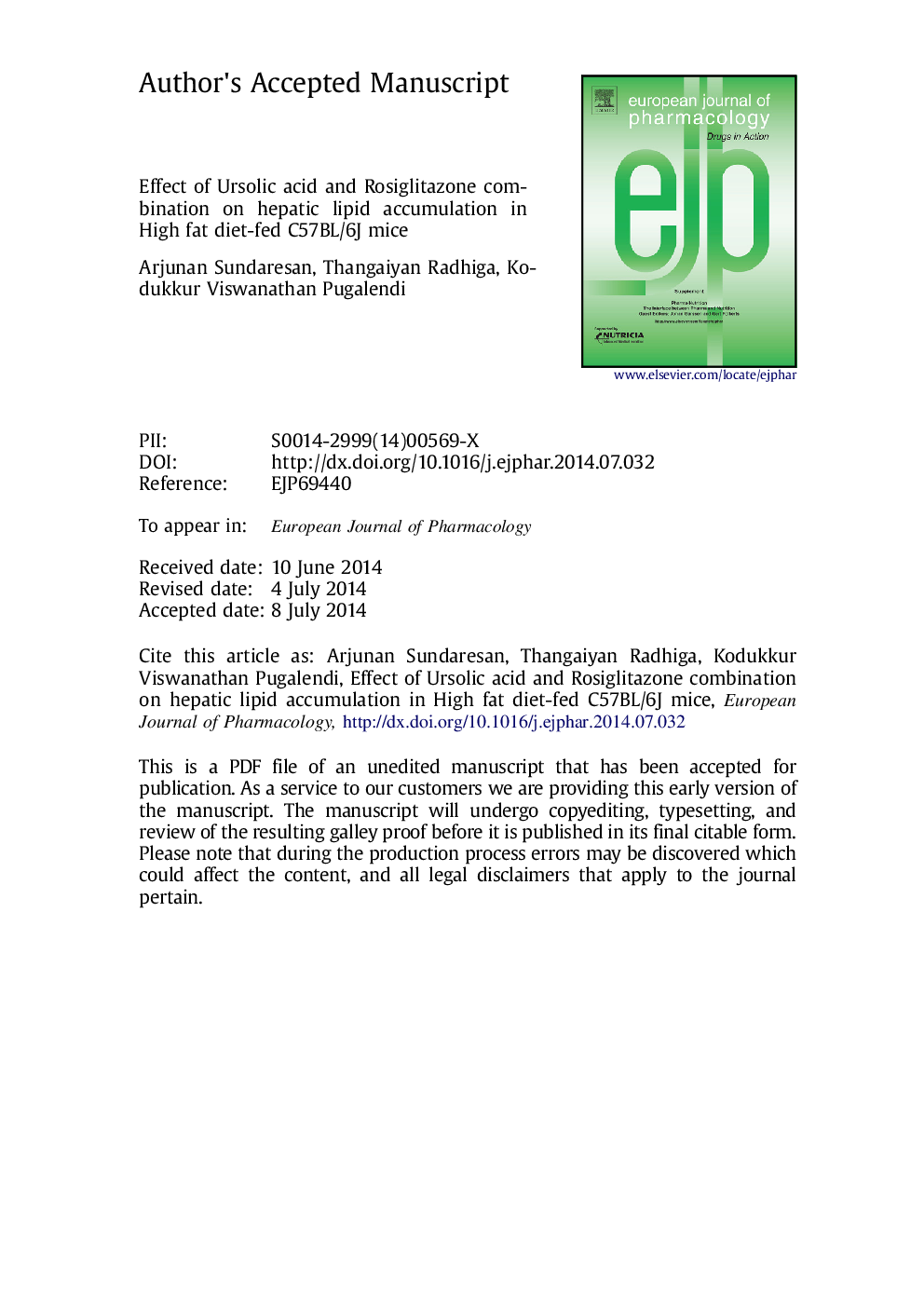| Article ID | Journal | Published Year | Pages | File Type |
|---|---|---|---|---|
| 5827681 | European Journal of Pharmacology | 2014 | 36 Pages |
Abstract
This study investigated the combined effect of ursolic acid (UA) and Rosiglitazone (RSG) on lipid regulatory genes in high fat diet (HFD)-fed mice. Male C57BL/6J mice were fed either normal diet or HFD for 10 weeks, after which animals in each dietary group were divided into following six groups, (normal diet, normal diet plus UA and RSG, HFD alone, HFD plus UA, HFD plus RSG, and HFD plus UA and RSG), for the next 5 weeks. UA (5 mg/kg BW) and RSG (4 mg/kg BW) were administered as suspensions directly into the stomach using a gastric tube. At the end of the study (106th day), their liver was analyzed for lipid content. RT-PCR and western blotting methods were used to analyze lipid regulatory genes. HFD-fed mice showed increased activities of hepatic marker enzymes (aspartate aminotransferase and alanine aminotransferase) in plasma and an increased concentration of total cholesterol, triglyceride and free fatty acid in liver. These results were confirmed by upregulated mRNA expression of lipogenic genes such as sterol-regulatory-element-binding protein-1c, fatty acid synthase and acetyl-CoA carboxylase and downregulated mRNA expression of fatty acid oxidative genes such as carnitine palmitoyltransferase-1, acetyl-CoA carboxylase and peroxisome proliferator activated receptor-α in HFD-fed mice. Combined treatment (UA/RSG) significantly reduced the hepatic marker enzyme activities and decreased the lipid accumulation in liver. Furthermore, combination treatment (UA/RSG) down-regulated lipogenic genes and upregulated fatty acid oxidative genes in HFD-fed mice. This study suggests that UA in combination with RSG reduced lipid accumulation in liver.
Related Topics
Life Sciences
Neuroscience
Cellular and Molecular Neuroscience
Authors
Arjunan Sundaresan, Thangaiyan Radhiga, Kodukkur Viswanathan Pugalendi,
